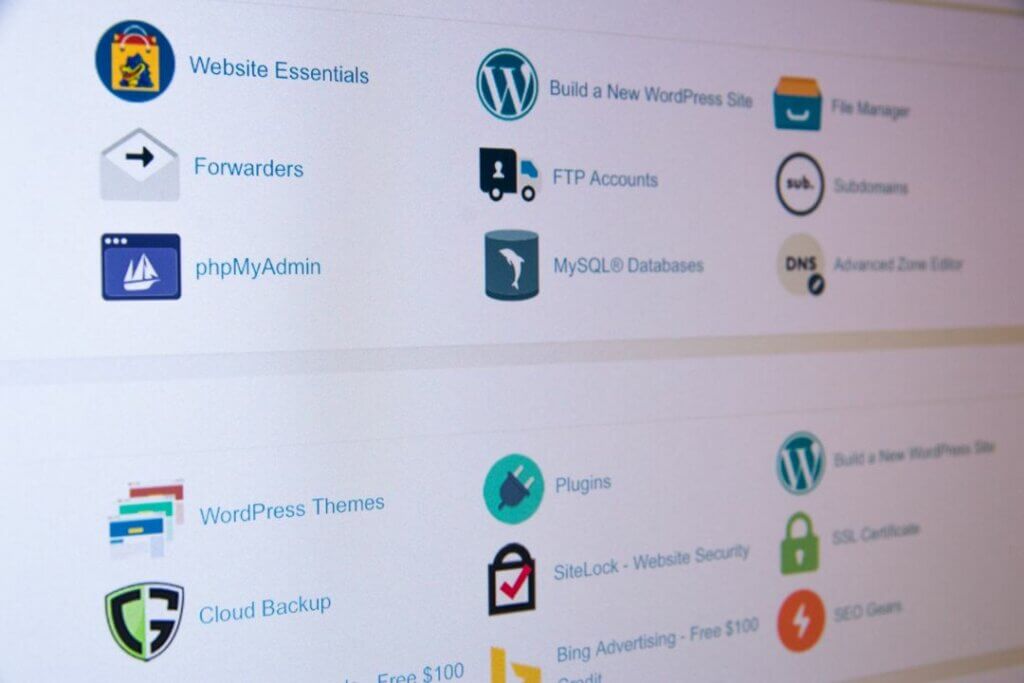If you’ve been thinking of starting up a new online store, chances are you’ve run into the names Shopify and WooCommerce in your search. Shopify and WooCommerce are the industry go-to’s for E-commerce platforms, often being paired against one another as the best options for new E-commerce stores.
While choosing the right platform is essential when committing to a new venture, it can also be challenging to understand which option is the best for your business.
Both solutions have an impressive repertoire of applications and solutions. While both are likely to provide the solution you need, pricing and customizability may influence which is best for your particular needs for the next five years.
In this post, we’ll put Shopify and WooCommerce head to head and dive into each strength and weakness of the platform. Continue reading for a concise, to-the-point analysis of both that will help better paint which platform is best for your particular needs.
Shopify & WooCommerce: What Are They?
Both platforms may provide a complete E-commerce experience, but both do so in different ways. Understanding how each platform functions at its core will give a better overall view of what they offer.
Shopify
Shopify acts as an all-in-one solution for E-commerce shops. You can connect and integrate with a wide range of channels by centralising data in one location. Because Shopify is an all-in-one solution, it houses all required functionality such as hosting, security, set-up, etc.

WooCommerce
WooCommerce is fundamentally different from Shopify, as WooCommerce is an open-source plugin for WordPress. Open source means that developers can create their own plugins for the platform, giving users far more customizability in what they can do when compared to all-in-one platforms.
Similarly, users interface with WooCommerce through the WordPress CMS, giving them access to other WordPress options. However, this generally means more specialised skills are needed to get a site set up correctly.
What Should You Compare When Analysing E-commerce Platforms?
Starting an online store is an exciting and often intimidating process, and the platform you decide to use will likely be the one you’ll be using in years to come. When selecting a platform, there are a few things to remember.
Pricing: How much does the platform cost to use, and what should you expect to pay to get a new site up and running?
Ease of use & Customizability: How customisable is the website?
General Site use: Is the site limited to E-commerce?
As a business owner, your focus may be on one or more of these areas. Knowing your strengths and weaknesses will enable you to analyse which of these core components of E-commerce is an essential deal breaker.
On top of these listed above, you may be concerned with full available functionality, integrations or payment methods. We recommend visiting the Shopify or WooCommerce sites for the full details.
Shopify vs WooCommerce: What Is the Price Difference?
Cost is often the first thing we consider when considering what platform to use, and with E-commerce, it’s as essential as ever. The price to get started on a platform often isn’t an accurate representation of the total costs to get everything up and running how you would like. While these costs aren’t “hidden”, they aren’t immediately noticeable unless you know where to look.

Shopify: How Much Does It Cost to Build Your E-commerce Store?
Shopify offers five packages, each priced monthly:
Basic (£19/m): new businesses with in-person sales
Shopify (£49/m): Growing businesses selling online and in person
Advanced (£259/m): For scaling businesses with advanced reporting
Shopify Plus (Starting at £2000/m): High-volume merchants and larger businesses
Starter (£5/m): Selling products through social and messaging apps
Most businesses will want to start on the “Shopify” package, which provides automation to better manage your products and sales. Similarly, this package comes with lower rates on transaction % cuts from Shopify, meaning if you’re planning on selling more than a few products each month, You’ll be paying less on these Shopify payments.
Each package comes with the requirements to set up a website, from a secure sockets layer (SSL) to web hosting and a Shopify subdomain, should you need it.
Shopify’s default payment solutions are steep compared to other merchant fees, especially if you want to incorporate a third-party payment gateway. You should get up to speed on these exact figures should you estimate high store traffic.
WooCommerce: How Much Does It Cost to Build Your E-commerce Store?
Since WooCommerce is an open-source plugin for WordPress, it’s free to use.
However, unlike Shopify, WooCommerce doesn’t provide you with an SSL certificate or innate hosting. WooCommerce, as a plug-in, requires you to have a functioning WordPress site. With that comes the requirement to have paid for hosting, an SSL certificate and a domain to host the site on.
Prices for these can vary depending on the provider you choose and any yearly discounts you can obtain. Hosting, for example, can be anywhere from £5/month to £100+/month. However, for an E-commerce website, cheap hosting can often lead to poor user and cart experiences, impacting sales and performance.
WooCommerce, unlike Shopify, doesn’t tack on percentage transaction fees, another point to consider.
Shopify vs WooCommerce: Ease of Use & Customizability
Customisability may not be the first thought when comparing the two solutions; however, customizability plays a crucial role in optimising your website to match your branding and niche and showcase your storefront in the best way possible.
Similarly, customizability options may incur an additional cost, so while the look of your site may come secondary to the platform costs, they can sometimes cost far more. Additionally, knowing whether the platform is easy to use or not will aid in planning for additional aid from a web developer should the need arise.
Shopify: Ease of Use and Customizability
As an all-in-one platform, Shopify is very much a pick-up-and-use platform. The platform handles updates, management, security, backups and more, giving you more time to focus on the appearance and functionality of your E-commerce site.
You are tasked with selecting a theme upon use and are then introduced to the customisation options available. Like most site builders, Shopify has an extensive drag-and-drop site builder. Shopify’s interface is also easy to use and shouldn’t be challenging for most users.
When building your page, you should find you have everything you need at your disposal. A few users may find that what they are trying to build isn’t available by default. One of the main issues with page builders like this is that the innate functionality can often be limited when trying to find specific solutions to unique page layouts.
In this case, you would need to access the add-ons in the marketplace. Most of these are free to use, but you may have to pay for premium functionality. The same can also be said about premium themes. If you cannot find a free theme that you like, you could be looking at an additional £100+ for a premium theme.

WooCommerce: Ease of Use and Customizability
As a plugin, WooCommerce requires users to directly install it and manage updates, security and backups themselves. Users of WordPress will be reasonably familiar with this process, but it can be intimidating for new WordPress users to manage. Fortunately, plenty of plugins can automate this, with other solutions being provided by many of the hosting providers on the market.
The bottom line is that there is more hands-on work with WooCommerce at the start, but the trade-off for this is more customizability options for your E-commerce website.
As you host your WordPress website, you have complete control over the website and how it functions. You also have access to far more plugins that can aid with almost all aspects of WordPress – from management and functionality to many free and paid theme options from WordPress itself or external options such as Themeforest. Unfortunately, there isn’t an in-built page builder, but options like elementor and beaver builder can provide the same functionality as Shopify’s drag-and-drop builder.
The downside?
The learning curve for WordPress can be steep, especially if you have yet to gain experience working with a content management system or implementing and managing technical updates and back-ups. These options are fantastic for a developer, but without can be pretty challenging to pick up.
Shopify vs WooCommerce: General Site Use
Some businesses opt to have two websites. One for their general information and front-facing client content, such as blog posts and resources, and then another website specifically for their store. This helps them break apart the content on each and have the most robust iteration of their sites possible.
However, doing so requires hosting and managing two sites which only some businesses can justify doing. Thus, creating a website that hosts the critical content and elements your business needs is vital when selecting the right platform.

Shopify – How Limited Are You?
Shopify excels at E-commerce when you have the right add-ons, themes and set-up, and while it offers an in-built blog to your store, the process could be more intuitive. Similarly, Shopify isn’t geared up to handle traditional websites. Many standard themes and add-ons are shop specific and not directed towards managing common content areas or pages you’d find on a conventional website.
If you want to create a complete website on Shopify, you will likely need the assistance of a web designer to create a bespoke design for the site. Of course, this comes with challenges, such as time allowance for build and the additional budget necessary for the developer to complete the work.
The tools are there with the drag-and-drop functionality to get close to a traditional website; however, you need the right add-ons to have all the functionality you need.
WooCommerce – How Limited Are You?
As WooCommerce is a plug-in for regular WordPress, users have access to the entirety of WordPress itself for their website. WordPress is built for traditional websites and has all the tools necessary to create great-looking websites with minimal technical knowledge. Plug-ins such as Elementor or Beaver builder provide users with drag-and-drop functionality.
Due to the platform’s open-source nature, problems are swiftly met by a solution from a marketplace developer. Thus, users should be able to create any site they desire & attach the E-commerce element to the site via WooCommerce.
This combination gives business owners a powerful solution to achieving both forms of a website in one place.
Which Platform Is Right for Your Business?
Both platforms have their strengths and weaknesses, and ultimately, your decision as to which platform you use depends on your current technical knowledge and your business needs.
Rounding up, Shopify is great if you need an E-commerce website and need to build it yourself with limited knowledge. The ease of use around finding a basic template, editing via the in-built drag-and-drop editor and leveraging the all-in-one platform makes creating a website a breeze. However, the trade-off here is customizability in design.
If you’re looking for a highly customisable website, you’ll either need to pay for premium themes and addons or hire a developer to create the specific bespoke site you’re looking for. Still, if you need a website up in a flash, Shopify is a great platform to use.
WooCommerce, on the other hand, provides heightened flexibility with its customisation options, both with standard themes and plugins and with its large and continuous community plugin support. Additionally, WooCommerce will be cheaper in the long run due to the omission of transaction fees, unlike Shopify’s relatively high % cuts.
The drawback is that substantially more technical knowledge is required to set up a WooCommerce site correctly. Due to WordPress not being an all-in-one platform, users must set up their hosting, domain, site and security. These elements not only take time to prepare but can also cost a substantial amount if you’re not in the know about what options to select.
However, a WooCommerce website is suitable if you’re already having a website redesigned or rebuilt. A web developer can factor your need for a store into the design and build process, effectively knocking out two birds with one stone. Similarly, a developer must arrange hosting and a domain and cover all technical components, such as security and back-ups, to complete their work.
While you’ll still be needed to finalise these details, you won’t have to configure or set them up yourself, making the process much more straightforward and smoother.
How Can Yoke.Digital Help?
Building a website from scratch can be challenging, especially if you’re under a time restraint or need more technical knowledge to get a new site up and running. We build websites on most platforms, including WordPress, Shopify, Squarespace, etc. Making the process smooth and transparent for the user’s ease of use and understanding.
Our experienced developers, designers and copywriters consider the client’s core needs, creating a bespoke website that ticks all the boxes.
Have a question about WooCommerce or Shopify, or want help with your website? Get in touch with our team today.
